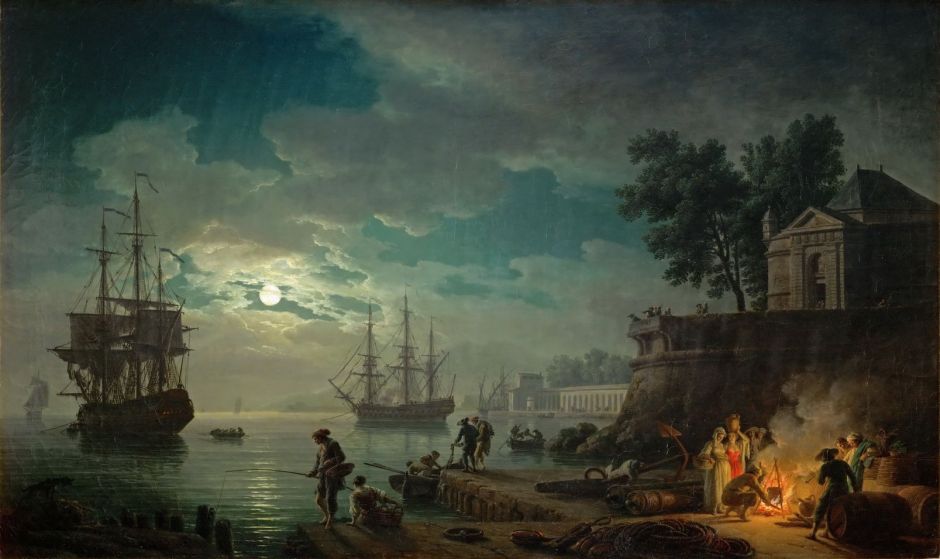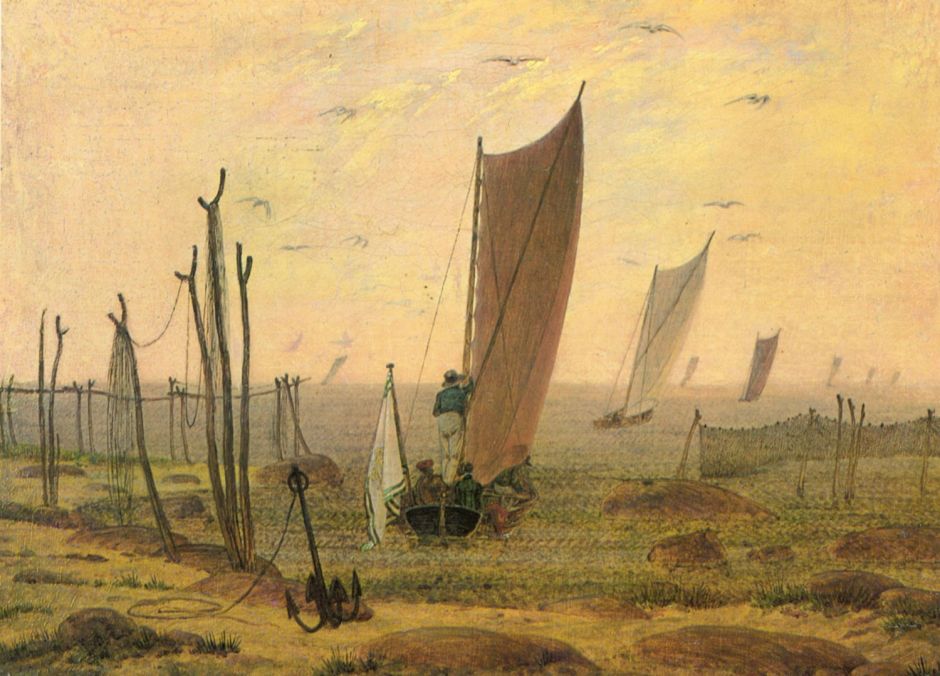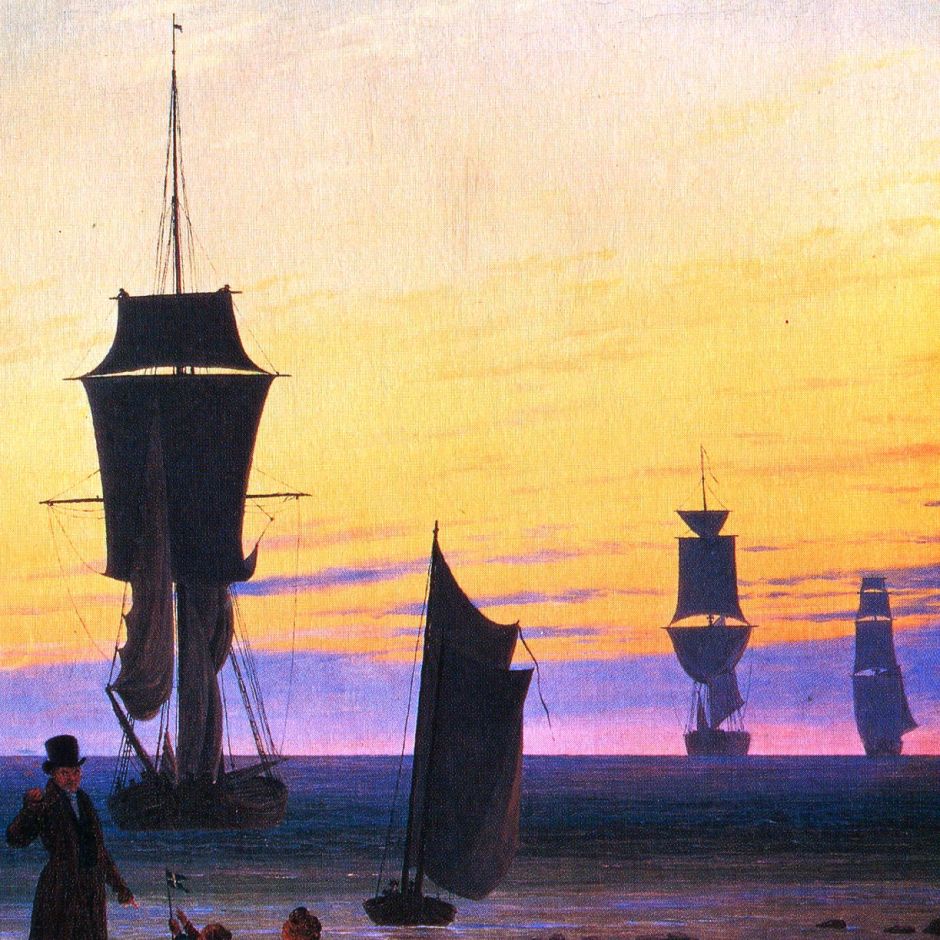Among their recurrent themes, the paintings of Caspar David Friedrich and the German Romantics sometimes featured sailing ships. These are a great technical challenge to painters, with their finely detailed rigging, and were inspired by the coastal nocturnes of Claude-Joseph Vernet.

Vernet’s late Seaport by Moonlight from about 1771 is a fine example of fully-rigged ships seen in low light.

Friedrich started early in his career with more modest sailing vessels such as those in his Morning (Boats Depart) from about 1816–1818. These vessels are for leisure rather than fishing.

His Ships at Anchor may have been painted as early as 1815, and is one of several similar motifs of sailing vessels in low light. This shows three larger ships at anchor just off the coast, apparently looking west into the setting full moon. He has painted simplified rigging, without the finer details.

JC Dahl’s The Coast of Rügen in Evening Light After a Stormy Day from 1818 is one of his earlier mature landscapes, and clearly influenced by Friedrich. Here he has opted for a small ship under sail in a choppy sea.

Friedrich’s Moonrise by the Sea (1822) is more ambitious, in showing two fully-rigged sailing ships heading straight towards the beach, the nearer furling its sails so as to lose way, the further still under full sail.

Dahl’s Shipwreck on the Coast of Norway from 1831-32 may have been developed in conjunction with his pupil Peder Balke (1804–1887), who went on to spend much of his career painting similarly dramatic scenes.

By the time that Friedrich painted his masterpiece The Stages of Life in 1834-35, his technical skills had reached their zenith, as shown in the detail below. These vessels seem to mirror the figures. Closest in to the shore are two small fishing boats under full sail, heading towards the nearest of the three ships. Out in the deeper water behind them is a fully-rigged ship in the process of furling its sails. Further in the distance is a larger fully-rigged ship, also furling its sails, and on the horizon is the fifth, large ship, its sails still fully set. Even Vernet would have been impressed.


Dahl’s fashion for painting Scandinavian ports at night extended his opportunities for painting ships, as in his Larvik by Moonlight from 1839.

In Dahl’s Copenhagen Harbour by Moonlight (1846), he shows many fully-rigged ships, following still in the tradition of Vernet.

